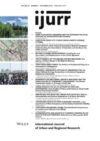Our article deals with the representation of social problems by ordinary families in St Petersburg. We try to answer two questions: How are statements about social problems constructed? What are the citizens of St Petersburg referring to when they talk about social problems? Our material consists of loosely structured thematic interviews with 42 families in St Petersburg in 1993. The interviews were part of a joint Finnish‐Russian study on living conditions, survival strategies, social problems and social networks in Russia. The title of our paper comes from the somewhat surprising observation that dirt and disorder in everyday life were the most frequently mentioned social problems. These and other statements made about social problems in present‐day Russia are taken as examples of social constructs and it is argued that these privately produced claims should be conceived as part of the public claims‐making process within the constructionist tradition. Instead of the traditional four‐field (private/public intersecting with the symbolic/practical) scheme, however, we suggest a more complex ‘hexagon’ scheme, in order to emphasize that the speaker as a subject employs multiple identities (various conceptions of ‘me’ and ‘us’) simultaneously. The hexagon model enables us to analyse the scattered references to dirt in a unifying framework of concepts. In answer to the question of why dirt is perceived to be such an important social problem for the citizens of St Petersburg it is concluded that dirt (like other identified social problems) is a multi‐dimensional phenomenon that refers on a practical and symbolic level to a variety of larger concerns.
Details
Written by:
Jussi Simpura, Galina Eremitcheva
Digital Object Identifier (DOI)
10.1111/1468-2427.00091
About DOI
Read full article as PDF
Read full article as HTML
See the references for this article
